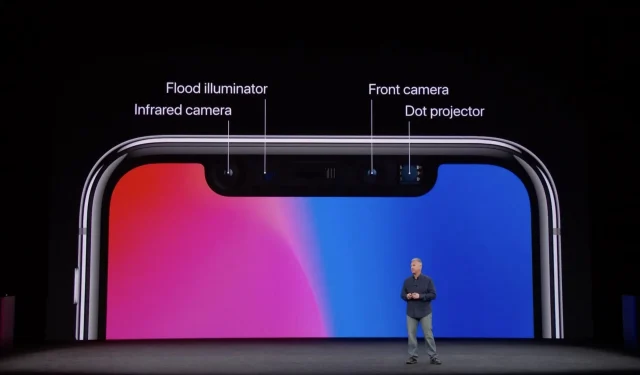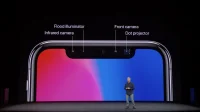Apple’s patent shows how the company will reduce the size of the notch on the iPhone 14 by using a folding infrared projector instead of a standard one.
How Apple will reduce the notch in the iPhone 14
The infamous notch at the top of the display on Face ID-enabled iPhone models contains a lot of detail that Apple calls a TrueDepth camera.
They include not only your standard FaceTime front-facing camera, but also Face ID components: an infrared camera, a spot projector, and a spotlight. In addition, the notch even houses the iPhone’s speaker, microphone, and two sensors to measure ambient light and how close the phone is to the user’s ear.
For iPhone 14 models, Apple is believed to use a different arrangement of these components. The FaceTime camera should be placed in the small round cutout next to the notch. The recess itself will decrease in size and take the form of a tablet.
Apple’s patent application titled “Foldable Illuminated Projector”shows how the company can pack the same amount of detail into a much smaller space.
The secret is to use a new part that refracts light. This light-bending member receives the infrared light provided by the infrared emitter and folds it one or more times before it exits the device. Read: How to set up an alternate look with Face ID
Apple notes that this approach could make Face ID even more accurate.
Secret in the mirrors
From Apple’s patent application:
In some embodiments, the device may include one or more lenses optically between the infrared light emitter and the light folding element such that one or more lenses can pass through infrared light from the infrared light emitter to the light folding element. One or more lenses may provide optical power to the light wrinkle projector such that the light wrinkle projector may be able to focus emitted infrared light. This may improve the detection and/or object recognition performance of the device.
Apple’s decision reminds us of telescope lens technology (which the iPhone is expected to adopt at some point), which uses prims to bend a light beam. In fact, one of the patent drawings shows a 45 degree prism.
This results in a smaller cutout area
Apple notes that its backlit spot projector can be used in other devices as well, including upcoming Mac laptops, iMacs, augmented reality headsets, and more.
Read the full text of the patent on the USPTO website.


